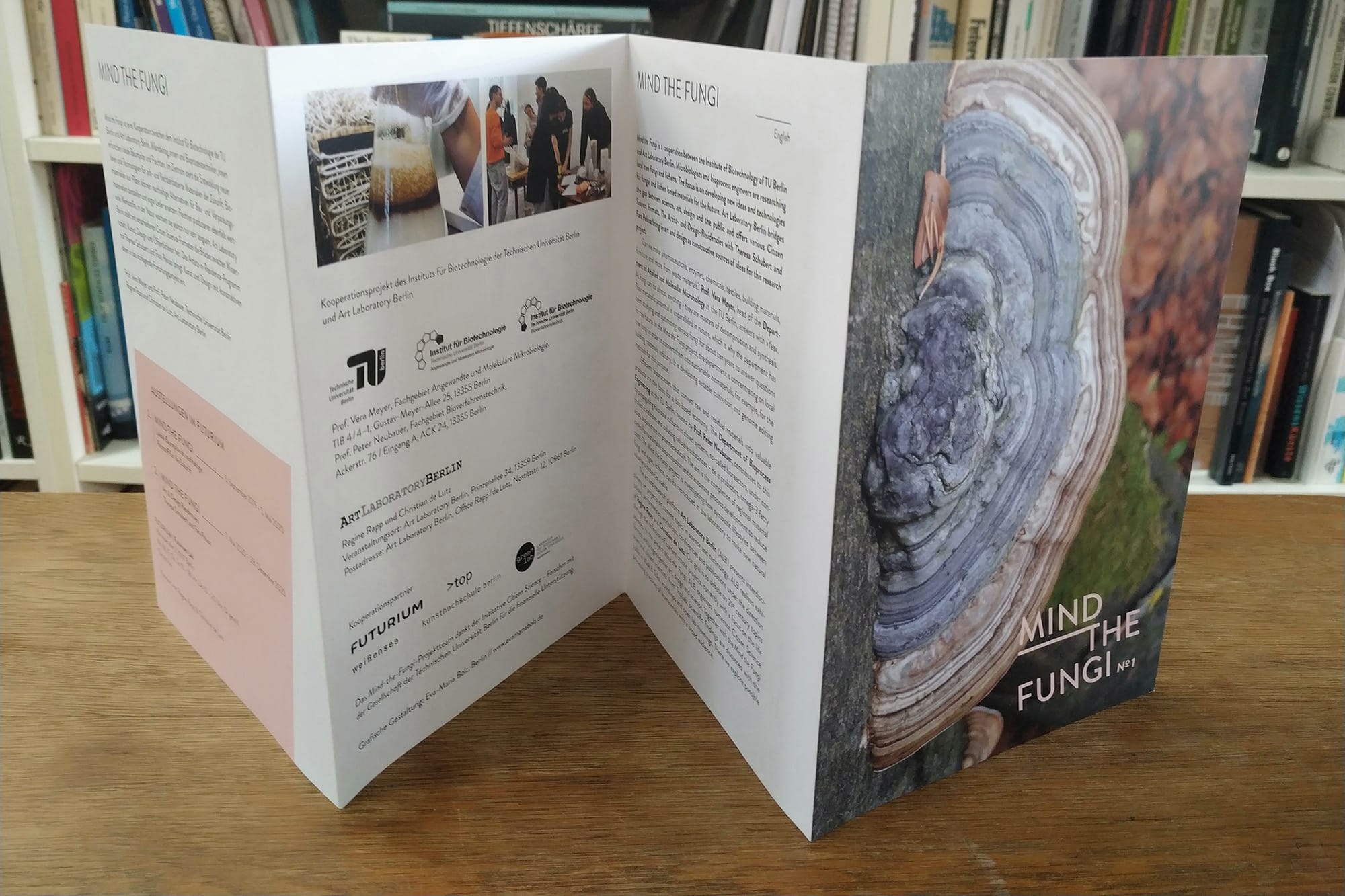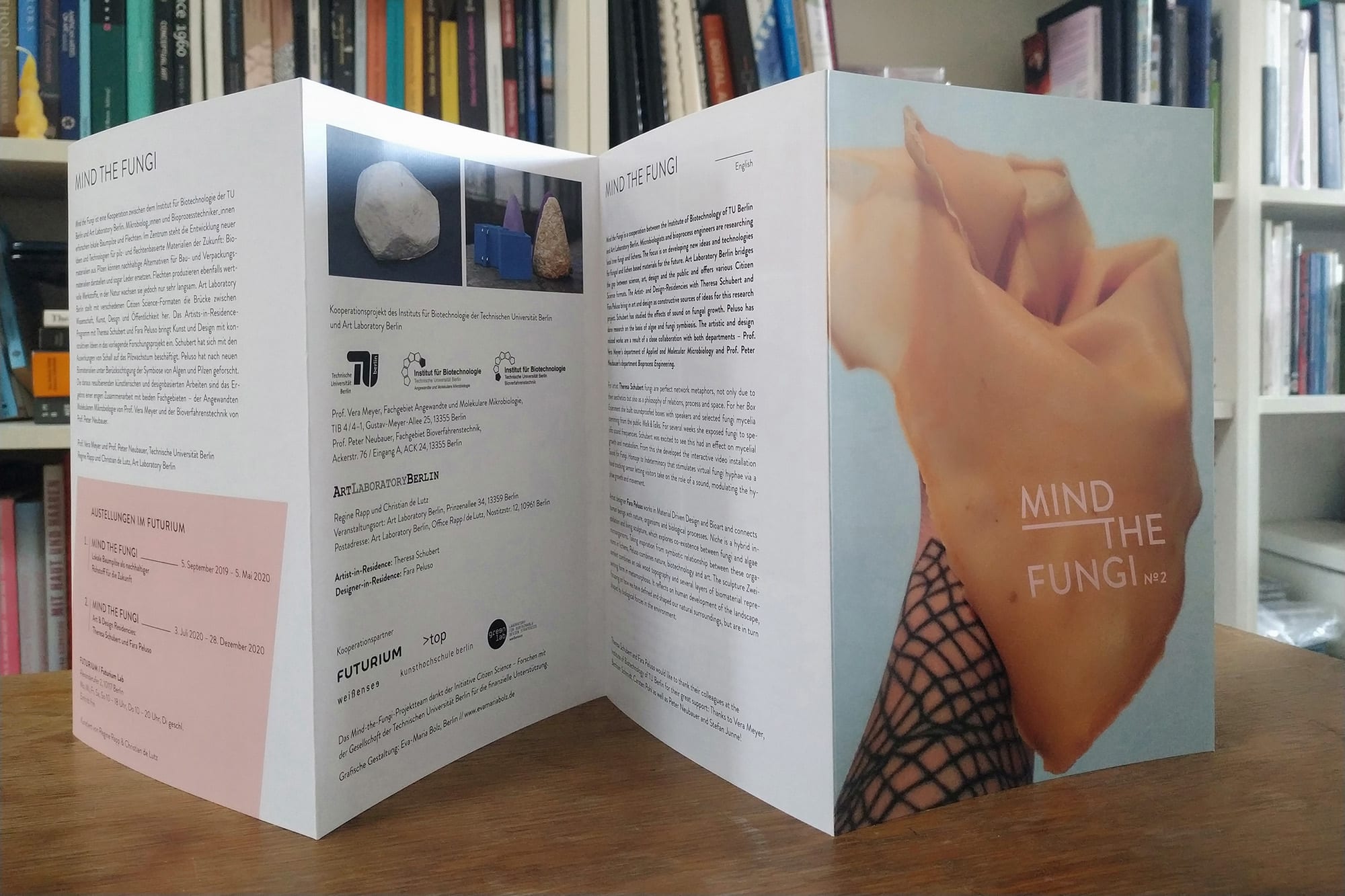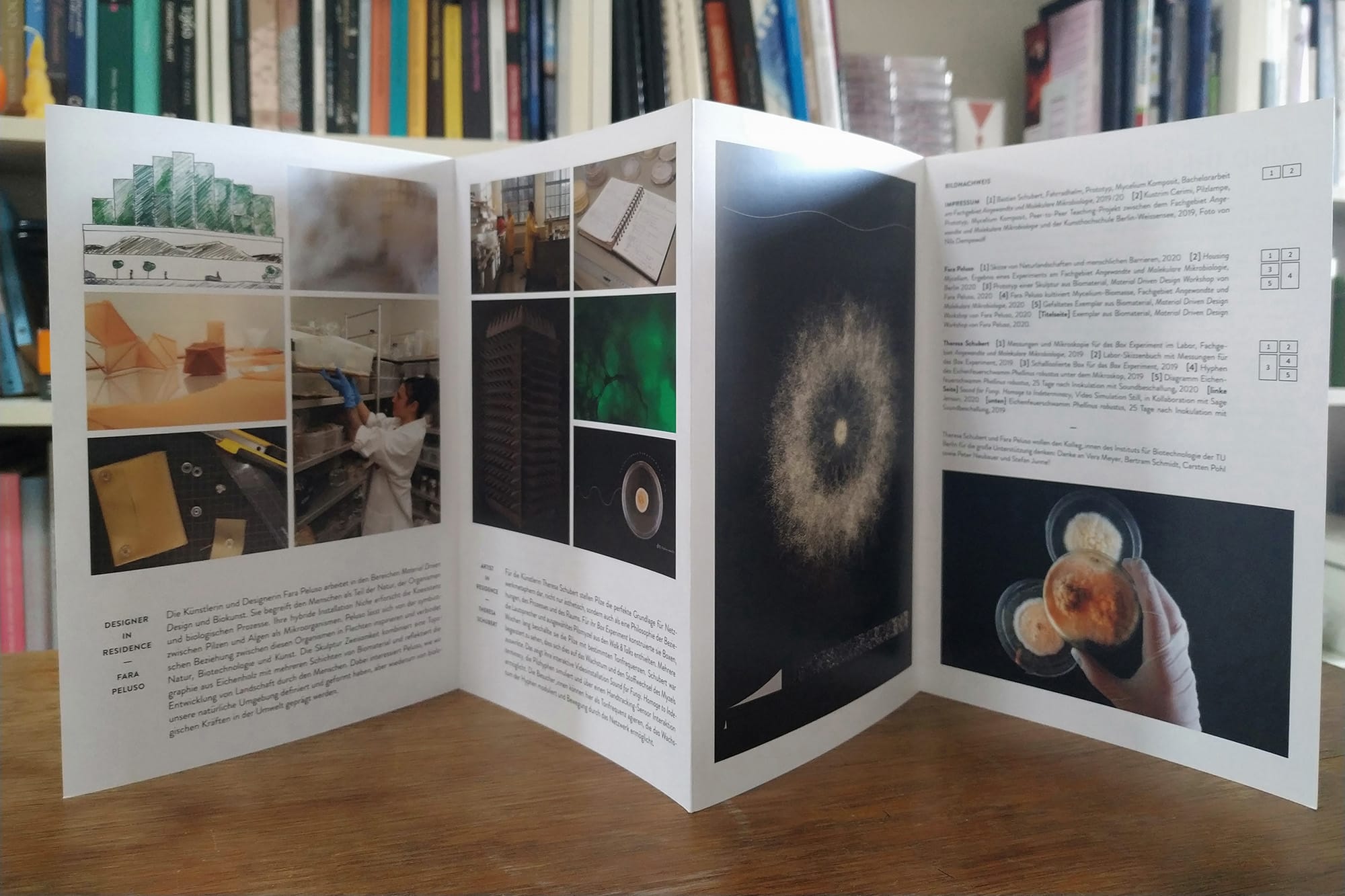Mind the Fungi
Brochure No. 1 | Brochure No. 2

Mind the Fungi-Brochures, Art Laboratory Berlin, 2020
Mind the Fungi is a cooperation between the Institute of Biotechnology of TU Berlin and Art Laboratory Berlin. Microbiologists and bio process engineers are researching local tree fungi and lichens. The focus is on developing new ideas and technologies for fungal and lichen based materials for the future. Art Laboratory Berlin bridges the gap between science, art, design and the public and offers various Citizen Science formats. The Artist- and Design-Residencies with Theresa Schubert and Fara Peluso bring in art and design as constructive sources of ideas for this research project.
Brochure No. 1
Can we make pharmaceuticals, enzymes, chemicals, textiles, building materials, furniture and more from waste materials? Prof. Vera Meyer, head of the Department of Applied and Molecular Microbiology at the TU Berlin, answers with »Yes«. As fungi can do almost anything – they are masters of decomposition and synthesis. Their metabolic potential is unparalleled in nature, which is why the department has been studying and optimizing various fungi for about ten years to answer questions for the future. In the Mind the Fungi project, the department is concentrating on local tree fungi in order to convert them into sustainable biomaterials, for example, for the building materials industry. It is developing suitable cultivation and genome editing methods for this purpose.
Efficient bioprocesses that convert raw and residual materials into valuable products are the basis for a bio-based economy. The Department of Bioprocess Engineering at the TU Berlin, headed by Prof. Peter Neubauer, contributes to this by propagating microbial cultures in closed systems, so-called bioreactors, under con-trolled conditions and isolating valuable substances – be it probiotics, omega-3 fatty acids, biopolymers or pharmaceuticals. The aim is the completion of regional material cycles for sustainable bioproduction and to automate process development to reduce costs. The Mind the Fungi project is investigating how symbiotic lifestyles between fungi and algae, lichens, can be reproduced in the laboratory to make new natural valuable substances usable.
The art and research platform Art Laboratory Berlin (ALB) presents interdisciplinary art projects on current topics in science and technology. ALB realizes exhibitions, performances, workshops, conferences and publications under the direction of Regine Rapp and Christian de Lutz. Our goal is to debate on 21st century topics through the reflection of current artistic projects, currently with a focus on the life sciences. In the project Mind the Fungi, ALB organizes numerous Citizen Science formats and brings together art, design and science. Together with the Mind the Fungi team and citizen scientists from TopLab, scientific findings are discussed with the public in Walk & Talks, workshops and open lab meetings. There we explore possible processing practices of biomaterials with a broad audience.
Brochure No. 2
For artist Theresa Schubert fungi are perfect network metaphors, not only due to their aesthetics but also as a philosophy of relations, process and space. For her Box Experiment she built soundproofed boxes with speakers and selected fungi mycelia stemming from the public Walk & Talks. For several weeks she exposed fungi to specific sound frequencies. Schubert was excited to see this had an effect on mycelial growth and metabolism. From this she developed the interactive video installation Sound for Fungi. Homage to Indeterminacy that stimulates virtual fungi hyphae via a hand tracking sensor letting visitors take on the role of a sound, modulating the hyphae growth and movement.
Artist designer Fara Peluso works in Material Driven Design and Bioart and connects human beings with nature, organisms and biological processes. Niche is a hybrid in-stallation and living sculpture, which explores co-existence between fungi and algae microorganisms. Taking inspiration from symbiotic relationship between these organisms in lichens, Peluso combines nature, biotechnology and art. The sculpture Zweisamkeit combines an oak wood topography and several layers of biomaterial representing form in metamorphosis. It reflects on human development of the landscape, focusing on how we have defined and shaped our natural surroundings, but are in turn shaped by biological forces in the environment.






